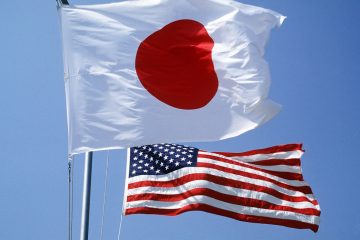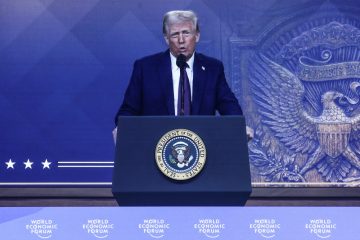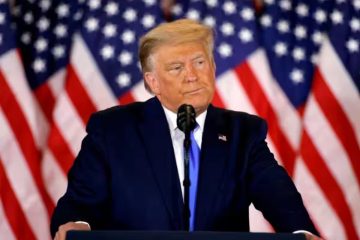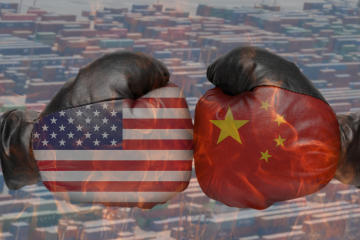The lives of the parties

THE NOTION that China’s economy, though nominally communist, resembles that of the Soviet Union seems on its face absurd. The fall of the Iron Curtain revealed a rusted shell of a country, incapable of manufacturing goods the West might want. China is the world’s biggest exporter; its cities are jammed with gleaming skyscrapers. Soviet citizens went without consumer luxuries or bought them dearly on the black market. China’s growing middle class can choose from scores of designer brands at the local mall.
The Union of Soviet Socialist Republics, formed five years after the Russian revolution of 1917, came apart at age 69. At 69, the People’s Republic of China seems destined for world domination. Yet the Soviet economy seemed modern and dynamic once. China’s GDPper person, at purchasing-power parity, remains below that in the Soviet Union on the eve of its collapse. And despite its capitalist trappings, the Communist Party is piloting China’s economy in a direction similar to that of the Soviet Union in its twilight.
There can be advantages to economic backwardness, as Alexander Gerschenkron, a Ukrainian-American economist, once argued. Late developers can generate high returns on new capital and can copy technologies from richer places, without a laborious process of trial and error. In the first half of the 20th century the population of the Soviet Union remained largely rural, and industrialisation was far less advanced than in western Europe. By moving its people to cities and placing them in factories filled with Western technologies, the Soviets made up economic ground without relying on markets and private capital.
The results were striking—for a time. Official Soviet data exaggerated the economy’s performance, but work by CIAanalysts and other economists points to robust growth in the 1950s, with real output per person rising by nearly 6% annually. In the 1960s it grew by a slower but still solid 3%. In the 1961 edition of his seminal economics textbook, Paul Samuelson, a Nobel-prizewinning American economist, predicted that the Soviet economy would be larger than America’s by the 1990s. When Nikita Khrushchev told the West “We will bury you”, the threat seemed credible.
But flaws became increasingly apparent in the 1970s. Despite high investment, growth in output and productivity slowed sharply. By the 1980s productivity was declining (see chart). In an analysis published in 1994, William Easterly and Stanley Fischer blamed Soviet ills on falling returns to capital. The benefits of capital accumulation (saving to fund factories, equipment and so on) fall over time unless new productive uses for capital can be found.
From the 1970s tumbling returns to investment dragged the Soviet economy into a deepening rut. Other economies faced similar woes in that decade. But firms in market economies had more freedom and incentive to experiment with new technologies. Resources could flow more easily from stagnant firms to promising ones. Every aspect of the Soviet economy was directed by central planners, who could not replicate these dynamics.
China’s development followed the Soviet path in some respects: industrialisation meant rapid urbanisation and the adoption of production techniques long established in richer economies. But China, unlike the Soviet Union, engaged with global markets. World trade helped discipline Chinese firms. Foreign subsidiaries and joint ventures facilitated the transfer of technologies and processes (to the chagrin of Western governments enraged by the theft of intellectual property). Middle-class Chinese can spend their incomes on the same foods and fashions as people in the West.
Yet these capitalist trappings mask the continued influence of the state. Private Chinese firms account for just 52% of industrial output, a share that has risen from almost nothing in the early 1980s, but is no longer falling. In recent years their share of investment has begun to grow. Though there is nothing on the scale of Soviet central planning, the Communist Party exerts influence on other parts of the economy, as well—through preferential access to credit, for instance, and the dual obligation of party-linked executives to their firms and political masters.
The best is nyet to come
The effects are malign. Growth in real output has fallen by more than half since 2007. More worrying, the contribution to growth from capital accumulation is higher now than it was in the 1980s or 1990s, and productivity makes less of a contribution. Indeed, productivity is actually declining, and at an increasing pace, according to recent work by Harry Wu and David Liang of Hitotsubashi University in Japan. Unpublished estimates by Mr Wu suggest that in 2016 total factor productivity, or the contribution to growth not accounted for by the addition of labour and capital, dropped back to levels last seen in the early 1990s. The problem is the same as that which plagued the Soviet Union: capital, directed by political interests, piling up in inefficient parts of the economy.
The work by Mr Wu and Mr Liang suggests that improving productivity in the information-technology sector has been China’s saving grace. Productivity growth in IT-producing firms slowed only slightly in the years after the global financial crisis, they reckon, while in other parts of the economy falling productivity subtracted more than two percentage points from growth in GDP. But as the rest of the rich world has discovered, it becomes more difficult over time to wring efficiencies out of ITproduction.
China is not on the verge of collapse. In the 1980s the Soviets were burdened by sinking oil prices and soaring defence spending. China’s market-oriented firms and more developed capital markets mean that the sorts of reforms it needs would be less disruptive than the painful transformation of the post-Soviet economy.
But it has plainly run out of room to boost productivity by mimicking advanced economies. Home-grown innovation could help, but is hamstrung by policies that shovel capital towards China’s least productive firms. China may seem to have grown more comfortable with markets. But the Communist Party’s interests still trump those of the private sector. There is no easy way to relax that constraint—or, perhaps, to avert a slide into stagnation.










